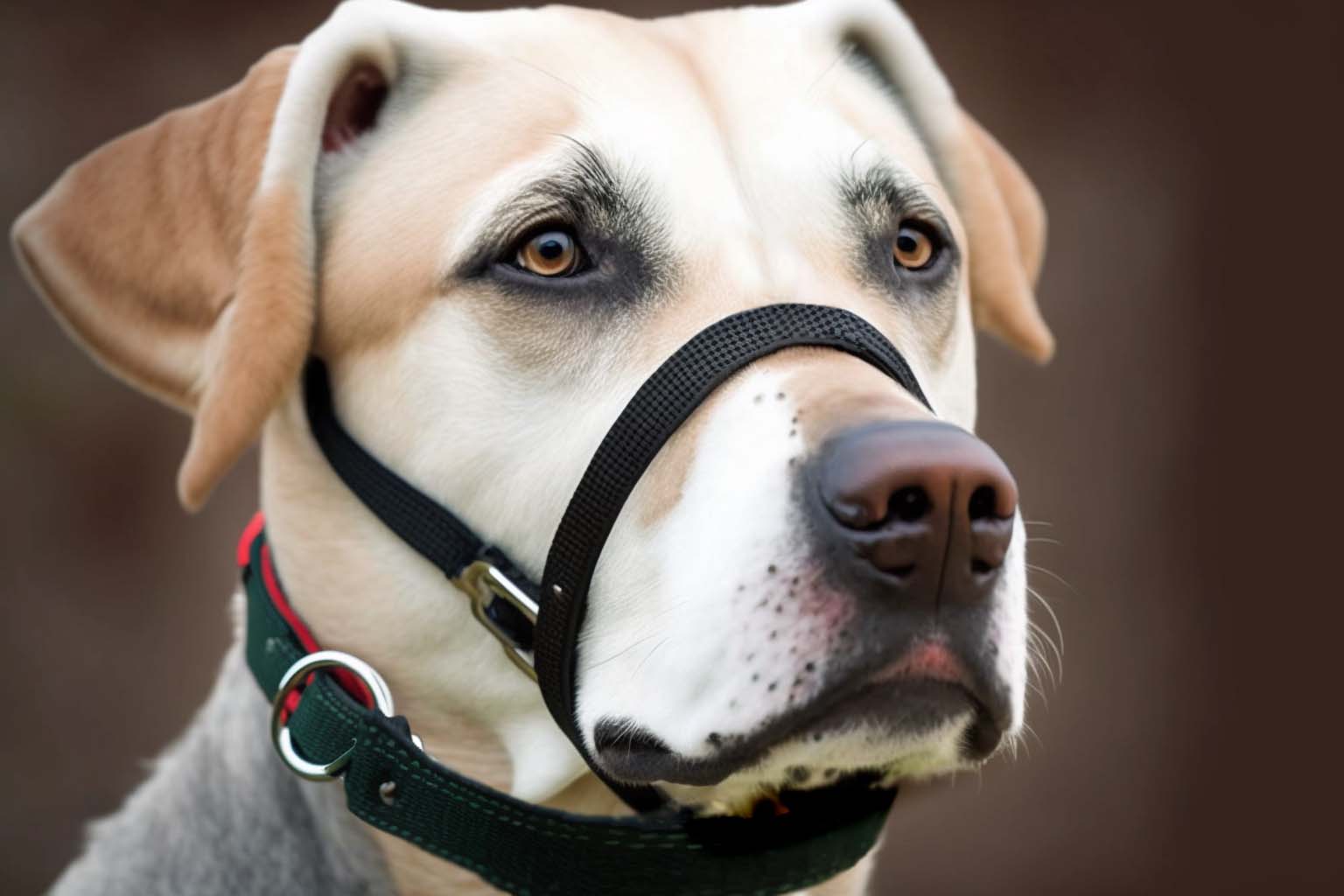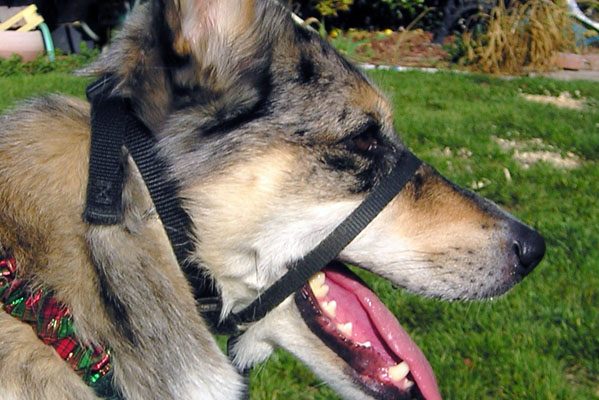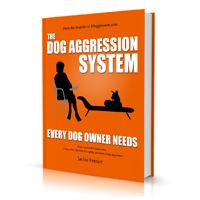Your cart is currently empty!
Managing dog aggression by using a head halter for an aggressive dog

Head halters can be really valuable tools for managing an aggressive dog. Head halters are similar to what horses wear and controls the direction of your dog’s head (and therefore his or her mouth). Head halters are far more humane to use than than choke collars, pinch collars, or using leash “pops” (quick jerks to the collar).
They are particularly useful when it comes time for targeted behavior modification because they will allow you control in case the situation unexpectedly gets heated. Additionally, your dog can still breathe, drink, and most importantly eat which makes training simpler than when using a muzzle.

The Gentle Leader head halter comes highly recommended by many veterinary behaviorists, and there is one that fits most dogs (see Gentle Leader head collars on Amazon). Gentle Leaders actually have a calming influence some dogs when they have been fit and introduced properly. There are also other brands of head halters such as Sporn halter (see the Sporn on Amazon)
and the Halti (see the Halti head halter on Amazon). They all vary slightly in design.
Cautions
However, the head halter has some cautions however.
Dogs can still bite
But it is important to understand that head halters are not muzzles. Head halters do not prevent biting on their own they way muzzles can. But when used properly, head halters allow you to be in more control in those situations where you absolutely need to have a more controlled and a safer dog.
Do not use a head halter if you still perform “leash pops”
A gentle but firm pulling the leash straight up helps shut the mouth. Head halters should they be used with the old-school style of quick jerks the leash to “correct”.
Head Halters Should Be Used with Specific Leashes
A regular leash not longer than 6 feet are the best leashes to use with a head halter.
They should not be used with a tight leash or a spring-loaded “flexi” leash. Long leashes are not ideal since the handler can’t use the later properly if the dog is too far back or in front.
Dogs should be desensitized to wearing one
While some dogs may try to paw head halters off, studies have indicated that despite this, their stress levels do not go up wearing one. But desensitizing your dog to wearing a head halter (pdf download) should prevent this as well as fitting your dog properly to wear one. You might be interested in seeing the video post: how to fit and introduce your to a Gentle Leader like a pro.
Head Halters must be Fitted Correctly
Incorrectly fitted, the Gentle Leader could cause your dog to paw at his nose or resist more than they usually would. The correct fit is even more important for flat nosed dogs and may not always be appropriate.
You should still avoid your dog’s aggression triggers
Also like using muzzle for aggressive dogs, you need to make sure you don’t keep exposing your dog to the things that cause him to be aggressive as this simply makes the aggression worse. Nor should you develop a false sense of security that you will have a “safe” dog.
How to handle dog aggression
Gentle leaders and other head halters are essential tools for behavior modification. They allow you to easily reward with food treats and give you important control should you misjudge your dogs tolerance. You can walk your dog on a loose leash, but if faced with an unexpected situation where your dog starts to pull, lunge or snap, gently raising the leash straight up (only as needed) gives you a lot of control over the dog’s head and mouth.
However, while they can be useful in managing an aggressive dog, they do not change the emotional state of your dog.
You are far better off making your dog a safer pet with a systematic treatment approach such as the one we offer in The Dog Aggression System Every Dog Owner Needs e-book than relying on a head halter or muzzle only. You should learn how to identify signs of to help you act before the aggression even starts, create a prevention and management plan so that you avoid the circumstances that are causing the aggression.
Then help your dog learn to cope better with the thing that is triggering his aggression with a treatment plan designed to keep his anxiety below “threshold”. This is a far more humane way to deal with the problem, and most dog aggression can be improved if you only use the right science-proven methods.
Harnesses for Aggressive dogs?
Harnesses will not prevent biting and if the dog is aggressive it could be dangerous reaching around the neck to fit the harness unless he has been conditioned to accept this calmly. However, it is good for dogs that pull or lunge and the no-pull harnesses offer more of a humane control for dogs with short snouts, where head halters won’t work. The two main no-pull harnesses are the Lupi and the Sporn or No-Pull Harness.
If you are interested in learning more about treating dog aggression, you may be interested in purchasing the The Dog Aggression System Every Dog Owner Needs e-book.
You might also be interested in
How to fit and introduce your dog to a Gentle Leader like a pro.
ADVERTISEMENT
The Dog Aggression System Every Dog Owner Needs E-book
ADVERTISEMENT
Tags:

